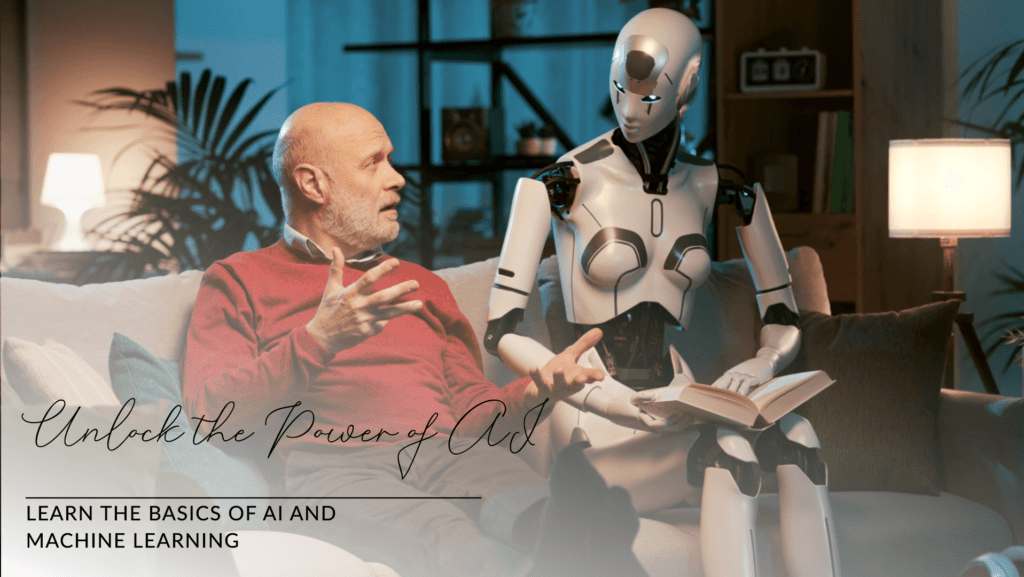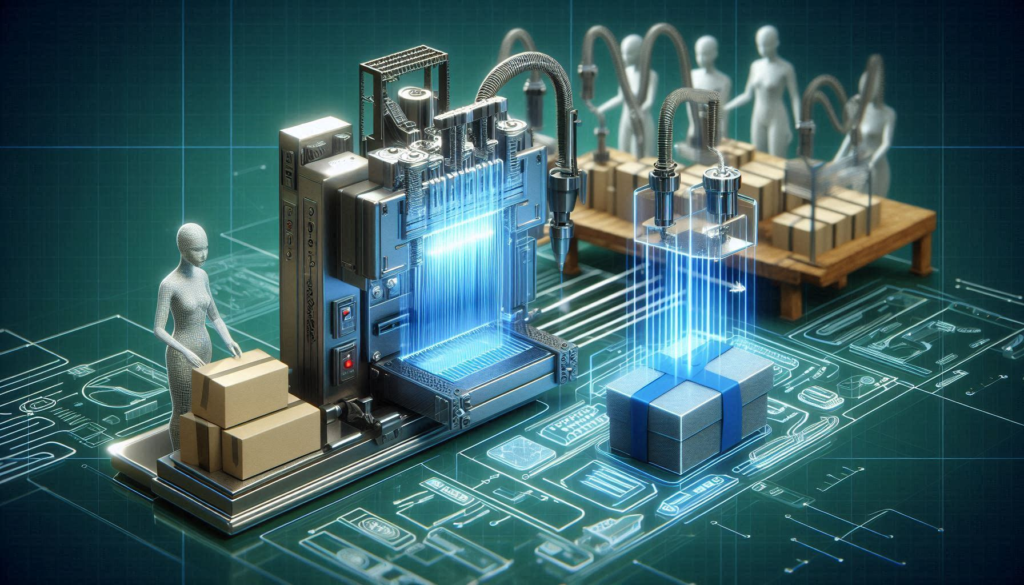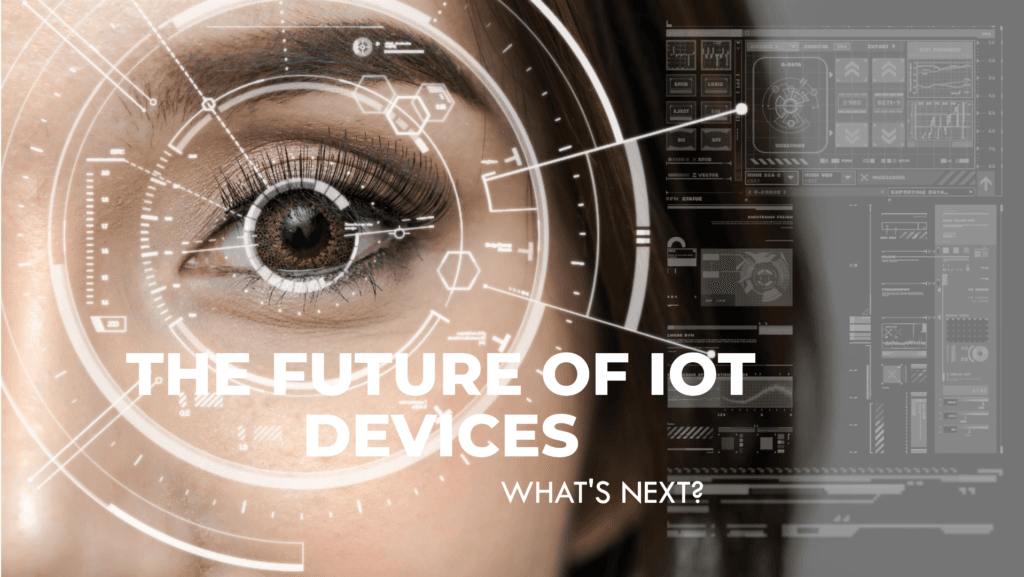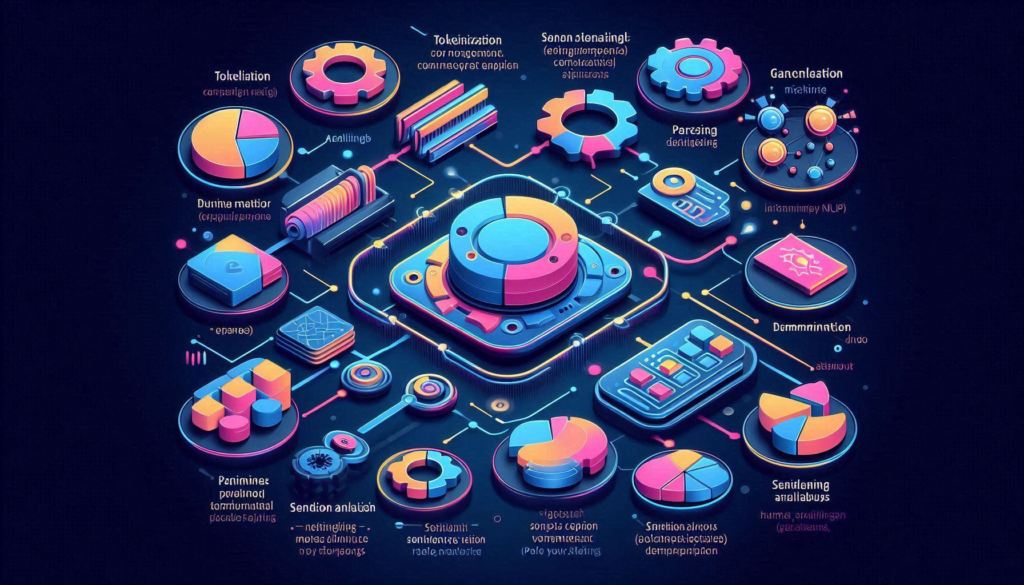Welcome to this edition of Technology Moment, where we delve into the most transformative innovations shaping our world. Today, we explore the fascinating realm of Artificial Intelligence (AI).
Stay tuned as we explore the limitless possibilities and the challenges of AI in this ongoing journey of technological advancement. Welcome to the future, today.
What is Artificial Intelligence?
These tasks include, but are not limited to, learning from experience, understanding and processing language, recognizing patterns, making decisions, and solving problems. AI systems are designed to simulate human cognitive functions, allowing them to process information, reason through data, and respond intelligently to their environment.
Brief History of AI
The journey of artificial intelligence can be traced back to ancient history with myths and legends of mechanical beings imbued with intelligence. However, the formal inception of AI as a scientific discipline began in the mid-20th century.
- Early Concepts and Philosophies: Ancient Greeks and Egyptians had myths about intelligent automatons, and in the 17th century, philosophers like Descartes and Leibniz pondered the nature of human thought and the possibility of machines thinking.
- Foundational Theories: The foundation for modern AI was laid in the early 20th century with the advent of computer science. Alan Turing, often regarded as the father of computer science, proposed the concept of a universal machine that could perform any conceivable computation if it were representable as an algorithm. In 1950, Turing introduced the Turing Test, a method to assess a machine’s ability to exhibit intelligent behavior equivalent to, or indistinguishable from, that of a human.
- Birth of AI as a Field: The term “Artificial Intelligence” was coined in 1956 during the Dartmouth Conference, organized by John McCarthy, Marvin Minsky, Nathaniel Rochester, and Claude Shannon. This event is widely considered the birth of AI as an academic discipline. Early AI research focused on problem-solving and symbolic methods.
- The Rise and Fall of AI: The 1960s and 1970s saw significant advances in AI, including the development of the first neural networks and the creation of expert systems. However, the field experienced several periods of reduced funding and interest, known as “AI winters,” due to unmet expectations and the complexity of the problems.
- Modern AI and Machine Learning: The resurgence of AI in the 21st century has been driven by advances in machine learning, particularly deep learning, and the availability of large datasets and powerful computing resources. Technologies like natural language processing, computer vision, and robotics have seen remarkable progress.
Table of Contents
Types of Artificial Intelligence
Artificial Intelligence is a broad field, and it can be categorized into different types based on capabilities and functionalities. The primary types of AI are Narrow AI, General AI, and Superintelligent AI. Each type represents a different level of sophistication and capability.
Narrow AI
Narrow AI, also known as Weak AI, is the most common form of artificial intelligence in use today. It is designed and trained to perform a specific task or a narrow range of tasks. Examples: Siri and Alexa etc.
Characteristics of Narrow AI:
- Task-Specific: Narrow AI is excellent at performing a single task or a set of closely related tasks.
- Lacks Generalization: Unlike humans, Narrow AI cannot generalize its learning to perform tasks beyond its specific domain.
- Prevalence: It is widely used in various industries such as healthcare, finance, entertainment, and customer service.
General AI
General AI, also known as Strong AI or AGI (Artificial General Intelligence), refers to a type of AI that possesses the ability to understand, learn, and apply knowledge. It can reason, solve problems, make judgments under uncertainty, plan, learn, and integrate prior knowledge in decision-making.
Characteristics of General AI:
- Human-Like Cognitive Abilities: General AI can perform any intellectual task that a human can do.
- Adaptability: It can transfer knowledge from one domain to another and adapt to new situations with minimal input.
- Development Status: While it is a popular concept in science fiction and theoretical discussions, General AI has not yet been realized and remains a significant challenge for researchers.
Superintelligent AI
Superintelligent AI, often referred to as Super AI, is a level of intelligence that surpasses the brightest human minds in every field, including scientific creativity, general wisdom, and social skills. This type of AI is purely speculative at this point and remains a topic of philosophical and ethical debate.
Characteristics of Superintelligent AI:
- Surpassing Human Intelligence: Superintelligent AI would outperform humans in all aspects, from solving complex scientific problems to understanding human emotions.
- Potential Risks and Benefits: The development of Super AI could lead to unprecedented advancements in technology and society but also poses significant risks if not properly controlled.
- Existential Considerations: The idea of Super AI raises important questions about control, ethics, and the future of humanity, as its capabilities could fundamentally change the world.
How AI Works
Understanding how artificial intelligence works can seem daunting due to the complex technologies involved. However, breaking it down into fundamental components makes it more digestible. Here, we’ll explore the core mechanisms that drive AI: Machine Learning, Deep Learning, and Neural Networks.
Machine Learning
Instead of being explicitly programmed to perform a task, ML systems are trained on large amounts of data. Here’s how it works:
- Data Collection: The first step in machine learning is gathering data. This data can be anything from text, images, audio, or video.
- Data Preparation: This involves removing duplicates, handling missing values, and transforming the data into a format suitable for training the machine learning model.
- Choosing a Model: There are various types of machine learning models, including regression models, decision trees, and clustering algorithms. The choice of model depends on the nature of the problem and the type of data.
- Training: During training, the machine learning model is fed the prepared data. The model learns by identifying patterns and relationships within the data. This is done by minimizing errors in its predictions using techniques like gradient descent.
- Evaluation: After training, the model is evaluated using a separate set of data to test its accuracy and performance. Metrics such as accuracy, precision, recall, and F1 score are used to assess how well the model performs.
- Deployment: This is where the model starts to provide real-world value.
Deep Learning
Deep Learning is a more advanced subset of machine learning that involves neural networks with many layers (hence the term “deep”). These neural networks are designed to mimic the human brain’s structure and function, allowing for more complex and nuanced data processing. Here’s a closer look at how deep learning works:
- Neural Networks: Deep learning utilizes neural networks, which are composed of layers of interconnected nodes (neurons). Each node processes input and passes it to the next layer of nodes.
- Layers: Each layer transforms the data in some way, with the hidden layers enabling the network to learn intricate patterns and representations.
- Activation Functions: These functions determine the output of each neuron. They introduce non-linearity into the model, allowing it to learn from complex data.
- Training with Backpropagation: The network learns through a process called backpropagation, where the output error is propagated back through the network, adjusting the weights of the connections to minimize the error. This is done iteratively to improve the model’s accuracy.
- Learning Rate: This parameter controls how much the model’s weights are adjusted with respect to the loss gradient. Finding the right learning rate is crucial for efficient and effective training.
- Large Datasets: Deep learning models require vast amounts of data to learn effectively. The more data available, the better the model can generalize and perform on new data.
Neural Networks
Neural Networks are the backbone of deep learning. Here’s a detailed look at their components and functionality:
- Neurons: The basic unit of a neural network is a neuron, which takes input, processes it, and passes it on to other neurons.
- Weights and Biases: Each connection between neurons has a weight, which determines the importance of the input. Biases are additional parameters that adjust the output along with the weighted input, enabling the model to fit the data better.
- Forward Pass: During the forward pass, input data is passed through the network layer by layer. Each neuron processes the input and produces an output, which is passed to the next layer until the final output layer is reached.
- Loss Function: Common loss functions include Mean Squared Error for regression tasks and Cross-Entropy Loss for classification tasks.
- Optimization: The goal is to minimize the loss function, which is done using optimization algorithms like Gradient Descent. These algorithms adjust the weights and biases to reduce the error in the model’s predictions.
Applications of AI in Everyday Life
Artificial Intelligence has seamlessly integrated into various aspects of our daily routines, often in ways we might not even realize. Here’s a closer look at how AI is enhancing our everyday experiences:
AI in Healthcare
AI is revolutionizing the healthcare industry by improving diagnostics, personalizing treatment plans, and predicting patient outcomes. For instance, AI algorithms can analyze medical images, such as X-rays and MRIs, to detect abnormalities with greater accuracy and speed than human radiologists. Additionally, AI-powered chatbots provide preliminary consultations and symptom checkers, making healthcare more accessible. Machine learning models predict disease outbreaks and patient readmissions, helping to allocate resources more efficiently and save lives.
AI in Finance
In the financial sector, AI helps in fraud detection, risk management, and customer service. Algorithms analyze transaction patterns to identify and flag suspicious activities, reducing the incidence of fraud. AI also aids in credit scoring by evaluating a broader set of data points, allowing for more accurate and fair assessments of creditworthiness. Robo-advisors, powered by AI, provide personalized investment advice and portfolio management, making financial planning more accessible to a broader audience.
AI in Entertainment
AI has significantly influenced the entertainment industry, enhancing both content creation and user experience. Streaming services like Netflix and Spotify use AI algorithms to analyze user preferences and viewing/listening history, recommending personalized content. AI also aids in the creation of content; for example, it can generate music, write scripts, and even create visual effects in movies and video games. These applications ensure that users are constantly engaged with content that matches their tastes and interests.
AI in Transportation
Transportation has been transformed by AI through advancements in navigation, traffic management, and autonomous vehicles. AI-powered navigation apps like Google Maps use real-time data to suggest the fastest routes and avoid traffic jams. Ride-sharing services such as Uber and Lyft employ AI algorithms to match passengers with drivers efficiently and predict demand patterns. Autonomous vehicles, developed by companies like Tesla and Waymo, leverage AI to interpret sensory data, make driving decisions, and improve safety on the roads.
AI in Business
Artificial Intelligence (AI) is revolutionizing the business landscape, bringing unprecedented changes and improvements to various aspects of operations. Let’s delve into how AI is transforming business practices and driving growth.
Improving Customer Service
AI has significantly enhanced customer service through the deployment of chatbots and virtual assistants. These AI-powered tools can handle a vast array of customer inquiries 24/7, providing quick and accurate responses. This not only improves customer satisfaction but also reduces the workload on human customer service representatives, allowing them to focus on more complex issues.
Personalized Customer Interactions
AI algorithms analyze customer data to offer personalized recommendations and solutions. For instance, e-commerce platforms use AI to suggest products based on a customer’s browsing history and preferences. This level of personalization can lead to higher customer retention and increased sales.
Efficient Query Resolution
AI can instantly access and process large amounts of data to resolve customer queries efficiently. For example, in the banking sector, AI chatbots can quickly provide information on account balances, recent transactions, and even guide customers through the process of applying for loans.
Enhancing Operational Efficiency
AI is streamlining business operations by automating routine tasks, allowing employees to focus on strategic initiatives. This boosts productivity and reduces the chances of human error.
Supply Chain Optimization
AI systems can predict demand more accurately, helping businesses manage their inventory more effectively. Machine learning algorithms analyze historical sales data, market trends, and other factors to forecast future demand, ensuring that businesses maintain optimal inventory levels.
Predictive Maintenance
In manufacturing, AI is used for predictive maintenance of machinery. Sensors and AI analytics can predict when a machine is likely to fail, allowing for maintenance to be performed just in time, thus minimizing downtime and extending the equipment’s lifespan.
Personalizing Marketing Strategies
AI enables businesses to create highly targeted marketing campaigns. By analyzing customer behavior and preferences, AI can help businesses deliver the right message to the right audience at the right time.
Customer Segmentation
AI tools can segment customers into different groups based on various criteria such as purchasing behavior, demographics, and preferences. This allows businesses to tailor their marketing efforts to each specific segment, increasing the likelihood of engagement and conversion.
Content Optimization
AI can also assist in content creation and optimization. For example, AI-powered tools can analyze which types of content perform best with different audiences and suggest improvements. This helps businesses craft compelling content that resonates with their target audience.
Data-Driven Decision Making
AI’s ability to process and analyze large volumes of data enables businesses to make more informed decisions. This data-driven approach helps companies identify trends, uncover insights, and predict outcomes with greater accuracy.
Sales Forecasting
AI algorithms analyze historical sales data, market conditions, and other relevant factors to predict future sales trends.
Risk Management
AI can identify potential risks and vulnerabilities in business operations by analyzing data patterns. For example, in finance, AI systems can detect fraudulent activities by recognizing unusual transaction patterns, thereby protecting businesses from significant financial losses.
Improving Employee Productivity
AI tools are designed to assist employees in their daily tasks, making them more efficient and productive. These tools can handle repetitive tasks, allowing employees to focus on more complex and creative aspects of their work.
Automating Routine Tasks
AI-powered software can automate routine administrative tasks such as data entry, scheduling, and report generation. This reduces the time employees spend on mundane tasks and allows them to focus on high-value activities.
Enhancing Collaboration
AI-powered collaboration tools help teams work more effectively together, even if they are geographically dispersed. These tools can analyze project data, provide insights, and facilitate communication, ensuring that teams stay aligned and productive.
AI in Education
Artificial Intelligence has been revolutionizing the field of education, offering innovative solutions to enhance learning experiences for students, streamline administrative tasks for educators, and ultimately, improve educational outcomes.
Personalized Learning Experiences
Through advanced algorithms and data analytics, AI can analyze individual learning styles, preferences, and strengths of each student. Based on this analysis, AI-powered learning platforms can generate personalized lesson plans, assignments, and study materials tailored to meet the specific needs of each learner. This personalized approach ensures that students receive content at their appropriate pace, helping them grasp concepts more effectively and achieve better academic results.
Automating Administrative Tasks
AI technologies have also been instrumental in automating routine administrative tasks in educational institutions, freeing up valuable time for educators to focus on teaching and mentoring students. Tasks such as grading assessments, managing schedules, and organizing educational resources can be automated using AI-powered systems. By leveraging natural language processing (NLP) and machine learning algorithms, these systems can efficiently handle administrative duties, thereby reducing workload and improving overall productivity within educational institutions.
Enhancing Student Engagement
AI-driven tools and applications have the potential to revolutionize student engagement in the classroom. Interactive learning platforms equipped with AI capabilities can offer immersive learning experiences through simulations, virtual reality, and gamification. These interactive elements not only make learning more engaging and enjoyable for students but also promote active participation and deeper understanding of complex concepts. Additionally, AI-powered chatbots and virtual tutors can provide immediate feedback and assistance to students, fostering a supportive learning environment both inside and outside the classroom.
AI in Research and Development
Research and Development (R&D) is a crucial aspect of various industries, ranging from healthcare and pharmaceuticals to technology and manufacturing. Artificial Intelligence (AI) has revolutionized the R&D process by significantly enhancing efficiency, accelerating scientific discoveries, and fostering innovation.

Accelerating Scientific Discoveries
AI algorithms are capable of analyzing vast amounts of data at speeds far beyond human capacity. In the field of scientific research, this capability is invaluable. Scientists can feed large datasets into AI systems, which can then identify patterns, correlations, and insights that might have been overlooked by human researchers. This accelerated data analysis expedites the process of scientific discovery, enabling researchers to uncover new insights and make breakthroughs in a fraction of the time it would take using traditional methods.
Innovations in AI Technologies
Moreover, AI itself is a subject of ongoing research and development. Researchers are continually striving to improve AI algorithms, develop new AI techniques, and create more advanced AI systems. This iterative process of innovation in AI technology fuels progress in other fields as well. For example, advancements in natural language processing (NLP) have enabled AI systems to understand and generate human-like text, leading to applications in fields such as content creation, language translation, and virtual assistants.
Example Applications in Research and Development
Drug Discovery
In the pharmaceutical industry, AI is being used to expedite the process of drug discovery. AI algorithms can analyze molecular structures, predict the efficacy and safety of potential drug compounds, and identify promising candidates for further testing. By streamlining the drug discovery process, AI accelerates the development of new medications, potentially leading to life-saving treatments for various diseases and conditions.
Material Science
In material science, AI-powered simulations and modeling techniques are revolutionizing the development of new materials with desired properties. Researchers can use AI to predict the behavior of materials under different conditions, optimize material compositions for specific applications, and discover novel materials with unprecedented properties. This has implications for numerous industries, including aerospace, electronics, and renewable energy.
Ethical Considerations in AI
Artificial Intelligence (AI) is a powerful technology that has the potential to transform various aspects of society, but it also raises significant ethical concerns that need to be addressed. As AI systems become more integrated into our daily lives, it’s crucial to consider the ethical implications of their use.
Privacy Concerns
One of the primary ethical considerations in AI is privacy. There is a risk that AI systems could compromise individuals’ privacy if proper safeguards are not in place. For example, AI-powered surveillance systems could infringe upon people’s privacy rights if they are not regulated appropriately.
To address privacy concerns, policymakers and organizations need to implement robust data protection laws and regulations. These measures should include strict guidelines on data collection, storage, and usage to ensure that individuals’ privacy rights are protected.
Bias and Fairness
Another ethical consideration in AI is the issue of bias and fairness. AI algorithms are trained on historical data, which may contain biases and prejudices. If these biases are not addressed, AI systems can perpetuate and even exacerbate existing inequalities in society. For example, biased algorithms used in hiring processes could result in discriminatory outcomes against certain groups.
To mitigate bias in AI systems, developers must employ techniques such as data preprocessing, algorithmic transparency, and fairness-aware machine learning. Additionally, organizations should regularly audit their AI systems to identify and address any biases that may arise.
Job Displacement
The widespread adoption of AI technologies has raised concerns about job displacement and unemployment. As AI systems automate tasks traditionally performed by humans, there is a risk of widespread job loss in certain industries. This can have significant socioeconomic implications, including widening income inequality and social unrest.
To address the issue of job displacement, policymakers need to implement measures such as reskilling and upskilling programs to help workers transition to new roles in the AI-driven economy. Additionally, governments may need to explore policies such as universal basic income to provide financial support to those affected by job loss due to AI.
The Future of AI
Artificial Intelligence (AI) is advancing at an unprecedented pace, with significant implications for various aspects of society, economy, and technology. The future of AI holds immense promise and potential, but it also presents several challenges and considerations that need to be addressed.
Emerging Trends
1. Advancements in Machine Learning and Deep Learning:
- Machine learning algorithms are becoming increasingly sophisticated, enabling AI systems to learn from vast amounts of data and improve their performance over time. Deep learning techniques, inspired by the structure and function of the human brain, are driving breakthroughs in areas such as image recognition, natural language processing, and autonomous systems.
2. AI-driven Automation:
- AI technologies are poised to revolutionize industries by automating routine tasks, streamlining processes, and enhancing productivity. From manufacturing and logistics to healthcare and finance, automation powered by AI is expected to reshape the workforce and redefine job roles.
3. Integration of AI with Internet of Things (IoT):
- The integration of AI with IoT devices is unlocking new possibilities for smart homes, cities, and industries. AI-powered sensors and actuators can collect and analyze data in real-time, enabling proactive decision-making and personalized experiences.
Potential Challenges
1. Ethical and Regulatory Concerns:
- As AI systems become more autonomous and pervasive, ethical considerations regarding privacy, bias, accountability, and transparency become increasingly important. There is a growing need for robust regulatory frameworks to ensure the responsible development and deployment of AI technologies.
2. Job Displacement and Reskilling:
- The widespread adoption of AI-driven automation could lead to job displacement in certain industries, raising concerns about unemployment and economic inequality. Governments, businesses, and educational institutions need to invest in reskilling and upskilling programs to prepare the workforce for the jobs of the future.
3. Security and Privacy Risks:
- AI systems are susceptible to cybersecurity threats such as data breaches, malicious attacks, and adversarial manipulation. Safeguarding sensitive information and ensuring the integrity and reliability of AI systems are paramount to building trust and confidence among users.
Opportunities Ahead
1. Innovation and Creativity:
- AI has the potential to unleash human creativity and innovation by automating mundane tasks and augmenting human capabilities. By offloading repetitive tasks to AI systems, individuals can focus on higher-level problem-solving, critical thinking, and innovation.
2. Socio-economic Benefits:
- AI-driven innovations have the potential to address pressing societal challenges, improve quality of life, and drive economic growth. From personalized healthcare and precision agriculture to sustainable energy and environmental conservation, AI technologies can have a transformative impact on society.
3. Collaboration and Coexistence:
- The future of AI hinges on collaboration between humans and machines, rather than competition or substitution. Embracing a collaborative approach to AI development and deployment can unlock synergies and create new opportunities for human-AI coexistence and symbiosis.
AI and Human Interaction
Artificial Intelligence (AI) has increasingly become integrated into various aspects of our lives, influencing how we interact with technology and each other. The relationship between AI and human interaction encompasses a spectrum of scenarios, ranging from collaborative efforts to potential concerns about dependence on AI systems.
Enhancing Human Capabilities
One of the primary aims of AI is to enhance human capabilities rather than replace them entirely. AI technologies are designed to augment human decision-making processes, improve efficiency, and streamline tasks. For example, in healthcare, AI-powered diagnostic tools can assist medical professionals in making accurate diagnoses by analyzing vast amounts of patient data more quickly and accurately than a human alone could manage.
Furthermore, AI-driven automation has the potential to free up human workers from repetitive or mundane tasks, allowing them to focus on more creative and high-level problem-solving activities. This shift in workload allocation can lead to increased job satisfaction and productivity among workers.
Collaboration between Humans and AI
This collaborative approach involves leveraging the strengths of both humans and AI systems to achieve better outcomes. For instance, in autonomous vehicles, human drivers can work alongside AI systems to ensure safe navigation and decision-making, particularly in complex or unforeseen situations where human intuition and judgment are invaluable.
Moreover, AI-powered virtual assistants, such as chatbots, are becoming increasingly sophisticated in their ability to understand and respond to human queries and requests. These virtual assistants can streamline customer service interactions, providing timely and personalized assistance to users while reducing the burden on human customer support agents.
Ethical Considerations
However, the integration of AI into human interactions raises important ethical considerations. As AI systems become more pervasive in society, questions about privacy, bias, and autonomy emerge. There is a need for transparent and accountable AI systems that prioritize ethical principles and safeguard human rights.
Additionally, there are concerns about the potential for AI systems to exacerbate existing inequalities or create new forms of discrimination. For example, biased algorithms could perpetuate racial or gender biases in decision-making processes, leading to unfair outcomes for certain groups.
AI in Popular Culture
Artificial Intelligence has captivated the imagination of creators across various forms of popular culture, including movies, TV shows, literature, and even video games. Its portrayal often reflects societal perceptions, fears, and aspirations regarding AI technology. Here’s a closer look at how AI is represented in different facets of popular culture:
AI in Movies and TV Shows
Movies and TV shows have long explored the potential of AI and its impact on humanity. From classic sci-fi films like “2001: A Space Odyssey” and “Blade Runner” to modern blockbusters like “Ex Machina” and “Her,” AI characters and themes have been central to storytelling. These narratives often raise thought-provoking questions about consciousness, ethics, and the relationship between humans and machines. Whether portrayed as benevolent helpers or existential threats, AI in cinema and television reflects our collective fascination and apprehension towards advancing technology.
AI in Literature
Literature has also provided rich fodder for exploring AI concepts and their implications. Authors like Isaac Asimov, Philip K. Dick, and Arthur C. Clarke have crafted intricate worlds where AI-driven societies grapple with existential dilemmas and moral quandaries. From Asimov’s Three Laws of Robotics to Dick’s exploration of artificial empathy, literature offers nuanced reflections on the nature of intelligence and the boundaries of human-machine interaction. These narratives often serve as cautionary tales or philosophical inquiries, challenging readers to ponder the essence of humanity in an increasingly automated world.
AI in Video Games
Video games offer immersive experiences where players can interact with AI-driven characters and environments. From non-player characters (NPCs) with sophisticated behavior patterns to procedurally generated worlds powered by AI algorithms, gaming technology continues to push the boundaries of virtual intelligence. Games like “Mass Effect,” “Detroit: Become Human,” and “Portal” showcase AI in diverse roles, from companions and adversaries to mentors and enigmas. These interactive narratives provide players with agency to shape the outcome of AI-human interactions, blurring the line between storytelling and gameplay.
Debunking AI Myths
Artificial Intelligence (AI) is often surrounded by misconceptions and myths, largely fueled by popular culture, media, and a general lack of understanding of the technology. These myths can lead to unrealistic expectations or unnecessary fears. Let’s dive into some of the most common myths about AI and uncover the realities behind them.
Common Misconceptions
- AI Will Take Over the World
- Myth: A common trope in science fiction is the notion that AI will become so powerful that it will take over the world, enslaving or eradicating humanity.
- Reality: AI, as it currently stands, operates within the constraints of the data and parameters set by its human creators. While it can perform specific tasks exceedingly well, it lacks the general understanding and consciousness required to pose such a threat. AI is designed to assist and augment human capabilities, not to dominate them.
- AI is Fully Autonomous
- Myth: There’s a belief that AI systems can operate entirely on their own, making independent decisions without human intervention.
- Reality: Most AI systems are heavily dependent on human input, both in their initial design and ongoing operation. They require substantial amounts of data to learn from and need to be programmed with specific goals. While AI can automate certain processes, human oversight is essential to guide and correct these systems.
- AI Can Do Everything a Human Can
- Myth: Some people think AI can replicate every human ability, including creativity, empathy, and critical thinking.
- Reality: AI excels in tasks involving pattern recognition, data analysis, and repetitive processes, but it falls short in areas requiring genuine creativity, emotional intelligence, and the nuanced understanding of context that humans possess. AI can assist in creative processes but cannot replace the unique human touch.
- AI is Infallible
- Myth: There’s a misconception that AI, being a machine, is always accurate and cannot make mistakes.
- Reality: AI is only as good as the data it is trained on and the algorithms that power it. If the data is biased or flawed, the AI’s decisions and outputs will reflect those issues. Furthermore, AI systems can and do make errors, sometimes with significant consequences, highlighting the need for continuous monitoring and improvement.
- AI Will Replace All Jobs
- Myth: A widespread fear is that AI will lead to mass unemployment by taking over all types of jobs.
- Reality: While AI and automation may replace certain types of jobs, especially those involving repetitive tasks, they are also creating new job categories and opportunities. AI is likely to augment many roles, making tasks more efficient and allowing humans to focus on more complex, creative, and strategic work.
The Reality of AI Capabilities
Understanding what AI can and cannot do is crucial for harnessing its potential responsibly and effectively. Here are some realistic views of AI’s capabilities:
- Specialized Tasks: AI is extremely powerful in specialized applications, such as image recognition, language translation, and data analysis. These systems are known as Narrow AI, which means they are designed to perform specific tasks efficiently.
- Human-AI Collaboration: AI is best seen as a tool for enhancing human abilities rather than replacing them. For example, in healthcare, AI can analyze vast amounts of medical data to aid doctors in diagnosing diseases, but it cannot replace the expertise and judgment of a medical professional.
- Continuous Learning and Improvement: AI systems improve over time with more data and better algorithms. However, this learning is guided and corrected by human experts who ensure that the AI remains aligned with its intended goals.
Government and AI
AI Regulations and Policies
As AI continues to evolve and integrate into various aspects of society, governments around the world are recognizing the need for robust regulations and policies to ensure its responsible development and deployment:
- Data Privacy and Security: AI systems often rely on vast amounts of data to function effectively. Governments are implementing policies to protect individuals’ privacy and ensure that data is collected, stored, and used responsibly. Regulations like the General Data Protection Regulation (GDPR) in the European Union set strict guidelines on data usage, giving citizens greater control over their personal information.
- Ethical Standards: To mitigate the risks of bias and unfair treatment in AI systems, governments are establishing ethical guidelines. These standards aim to promote fairness, transparency, and accountability in AI algorithms. For instance, the EU’s AI Act proposes a risk-based approach to regulate AI, ensuring that higher-risk AI systems meet stricter requirements.
- Safety and Liability: Governments are also focusing on the safety and reliability of AI systems, particularly those used in critical sectors such as healthcare, transportation, and finance. Regulations are being developed to ensure that AI applications undergo rigorous testing and validation before deployment. Additionally, liability frameworks are being established to determine who is responsible in case of AI-related accidents or failures.
- Workforce Impact: The rise of AI is transforming the job market, leading to concerns about job displacement and the need for workforce reskilling. Governments are creating policies to support workers affected by AI-driven automation and to promote education and training programs that prepare individuals for AI-related jobs.
Global AI Initiatives
In addition to national regulations, there are numerous international efforts aimed at fostering cooperation and establishing global standards for AI:
- The Global Partnership on AI (GPAI): This international initiative brings together experts from various countries to collaborate on AI research and development. GPAI aims to ensure that AI technologies are used in ways that align with human rights, inclusion, diversity, innovation, and economic growth.
- OECD AI Principles: The Organization for Economic Co-operation and Development (OECD) has developed AI principles that provide a framework for the responsible stewardship of trustworthy AI. These principles emphasize the importance of AI that is transparent, accountable, and human-centered.
- UNESCO’s AI Ethics Recommendation: The United Nations Educational, Scientific and Cultural Organization (UNESCO) has adopted a set of ethical guidelines for AI. These recommendations highlight the importance of respecting human dignity, promoting sustainable development, and ensuring that AI technologies do not exacerbate inequalities.
- AI in G20: The G20, an international forum for governments and central bank governors from 19 countries and the European Union, has also been addressing AI-related issues. The G20 focuses on creating a common understanding and collaborative approach to harness the benefits of AI while addressing its potential risks.
National Strategies
Many countries have developed their own national AI strategies to harness the potential of AI while addressing its challenges:
- United States: The U.S. has launched the American AI Initiative, which aims to promote AI research and development, build an AI-ready workforce, and foster international collaboration on AI. The initiative emphasizes the importance of maintaining American leadership in AI while ensuring that AI technologies are used in ways that align with American values.
- China: China has made significant investments in AI, with its State Council releasing a comprehensive plan to become the world leader in AI by 2030. This strategy focuses on advancing AI research, promoting AI industries, and integrating AI into various sectors of the economy.
- European Union: The EU’s AI strategy is centered on creating a regulatory framework that fosters innovation while ensuring ethical AI development. The EU aims to become a global leader in AI by promoting research, supporting SMEs, and investing in AI infrastructure.
- Canada: Canada was one of the first countries to adopt a national AI strategy, emphasizing investment in AI research, fostering talent, and promoting collaboration between academia and industry.
Challenges and Considerations
While governments are making strides in regulating and promoting AI, several challenges remain:
- Balancing Innovation and Regulation: Striking the right balance between fostering innovation and implementing necessary regulations is crucial. Overly restrictive regulations could stifle AI development, while insufficient regulations could lead to ethical and safety concerns.
- Global Coordination: AI is a global technology, and its impact transcends national borders. International cooperation and coordination are essential to address cross-border challenges, such as data privacy and cybersecurity, and to establish harmonized standards.
- Ensuring Inclusivity: Governments must ensure that AI benefits all segments of society and does not exacerbate existing inequalities. Policies should focus on promoting inclusivity and addressing the needs of marginalized and vulnerable populations.
Learning AI

Resources for Beginners
Starting your journey into the world of Artificial Intelligence can feel like a daunting task, but with the right resources, anyone can begin to understand and even build their own AI models. Here are some excellent starting points for beginners:
- Online Courses and Tutorials:
- Coursera: Platforms like Coursera offer courses from top universities. Andrew Ng’s “Machine Learning” course is a popular starting point.
- edX: Their “Introduction to Artificial Intelligence with Python” course is highly recommended.
- Udacity: Known for its “Nanodegree” programs, Udacity offers a variety of AI courses that range from beginner to advanced levels.
- Books:
- “Artificial Intelligence: A Modern Approach” by Stuart Russell and Peter Norvig: Often considered the bible of AI, this book covers a wide range of topics and is suitable for both beginners and advanced learners.
- “Machine Learning for Dummies” by John Paul Mueller and Luca Massaron: A great starting point for those with no prior knowledge.
- “Deep Learning” by Ian Goodfellow, Yoshua Bengio, and Aaron Courville: A more advanced read, but invaluable once you have the basics down.
- Online Communities and Forums:
- Stack Overflow: A great place to ask questions and learn from experienced programmers.
- Reddit: Subreddits like r/MachineLearning and r/artificial can provide useful discussions and resources.
- AI-specific forums: Sites like AI Alignment Forum focus on the philosophical and technical aspects of AI.
Advanced AI Courses
Once you have a handle on the basics, you might want to delve deeper into specific areas of AI. Here are some resources for advanced learners:
- Specialized Online Courses:
- Deep Learning Specialization by Andrew Ng on Coursera: This series of courses dives deeper into neural networks and deep learning.
- Reinforcement Learning Specialization by the University of Alberta on Coursera: Focuses on the principles and applications of reinforcement learning.
- Advanced Books:
- “Pattern Recognition and Machine Learning” by Christopher M. Bishop: A comprehensive book that covers a wide array of advanced topics in machine learning.
- “Bayesian Reasoning and Machine Learning” by David Barber: Focuses on probabilistic models and machine learning methods.
- Research Papers and Journals:
- arXiv.org: A repository of research papers where you can find the latest developments in AI.
- Journal of Artificial Intelligence Research (JAIR): An academic journal that publishes cutting-edge research in the field of AI.
Hands-On Practice
Learning AI isn’t just about reading and watching videos; hands-on practice is crucial. Here are some ways to get practical experience:
- Kaggle:
- Competitions: Participate in machine learning competitions to test your skills against others.
- Datasets: Use the vast array of datasets available to practice building models.
- Kernels: Study other people’s code to learn new techniques and approaches.
- Projects:
- Personal Projects: Start with simple projects like building a chatbot or a recommendation system.
- Open Source Contributions: This can provide valuable experience and exposure to real-world problems.
- Internships and Work Experience:
- Internships: Look for internships at tech companies that focus on AI. Practical work experience can be invaluable.
- Hackathons: Participate in AI hackathons to solve real-world problems and network with other AI enthusiasts.
Staying Updated
The field of AI is rapidly evolving, so it’s essential to stay updated with the latest trends and research:
- News Websites and Blogs:
- AI News: Websites like MIT Technology Review, Wired, and TechCrunch frequently cover AI developments.
- Blogs: Follow AI researchers and practitioners on Medium, LinkedIn, and personal blogs.
- Conferences and Meetups:
- Conferences: Attend AI conferences such as NeurIPS, ICML, and CVPR to learn about the latest research and network with experts.
- Meetups: Join local AI meetups to connect with like-minded individuals and stay engaged with the community.
- Podcasts and Webinars:
- Podcasts: Listen to AI-related podcasts like “Data Skeptic” and “The TWIML AI Podcast” to stay informed on the go.
- Webinars: Participate in webinars hosted by AI organizations and companies to learn about new tools and techniques.
Building a Career in AI
If you’re serious about a career in AI, consider these steps:
- Advanced Degrees:
- Master’s and PhDs: Pursuing an advanced degree in AI or related fields like computer science or data science can open doors to more specialized roles.
- Certifications:
- Professional Certifications: Obtaining certifications from recognized institutions can validate your skills and enhance your resume.
- Networking:
- Professional Networks: Join professional organizations such as the Association for the Advancement of Artificial Intelligence (AAAI) to network and find career opportunities.
Conclusion
From revolutionizing healthcare with predictive analytics and personalized treatments to enhancing customer experiences in business through sophisticated chatbots and recommendation systems, AI’s impact is profound and far-reaching. It’s not just transforming industries; it’s reshaping the very fabric of our daily lives
As we look to the future, AI continues to hold immense potential for groundbreaking innovations. However, with great power comes great responsibility. Ensuring ethical AI development and addressing concerns like privacy, bias, and job displacement will be crucial. Embracing these challenges with a forward-thinking approach will allow us to harness AI’s full potential for the betterment of society.
Stay informed and be part of the conversation on how AI will shape our future. Whether you’re a tech enthusiast, a professional, or a curious learner, there are endless opportunities to engage with this fascinating field. Let’s work together to ensure that the future of AI is bright and beneficial for all.
The journey of artificial intelligence is just beginning, and its potential is boundless. As we stand on the cusp of this technological revolution, one thing is certain – the future is intelligent, and it’s up to us to steer it in the right direction.
FAQs – Frequently Asked Questions
What is Artificial Intelligence?
Artificial Intelligence (AI) refers to the capability of a machine to imitate intelligent human behavior. Examples of AI include virtual assistants like Siri and Alexa, recommendation systems on Netflix, and autonomous vehicles.
In what ways does AI evolve and learn over time?
AI learns and improves through a process known as machine learning, where it uses data and algorithms to mimic the way humans learn. Deep learning, a subset of machine learning, involves neural networks with many layers (hence “deep”) that enable the AI to learn from vast amounts of data and make complex decisions.
What are the ethical concerns associated with AI?
There are several ethical concerns related to AI, including privacy issues, as AI systems can collect and analyze vast amounts of personal data. Bias in AI is another concern, where algorithms can perpetuate or even amplify existing societal biases if not properly addressed. Additionally, there is the issue of job displacement, as AI can automate tasks traditionally performed by humans, potentially leading to unemployment. Ensuring fairness, transparency, and accountability in AI systems is crucial to addressing these ethical challenges.
How is AI used in healthcare?
AI has numerous applications in healthcare, from enhancing diagnostic accuracy to personalizing treatment plans. For instance, AI algorithms can analyze medical images to detect diseases like cancer at an early stage. AI can also predict patient outcomes based on historical data, assist in robotic surgeries with high precision, and manage administrative tasks to improve hospital efficiency. These applications lead to better patient care and operational efficiency in healthcare settings.
What does the future hold for AI?
The future of AI is both exciting and challenging. Emerging trends include advancements in natural language processing, more sophisticated AI-human collaboration tools, and AI applications in new fields like climate science and space exploration. However, the future of AI also presents challenges, such as ensuring ethical use, managing the societal impact of AI-driven job changes, and addressing security concerns. Continued research, interdisciplinary collaboration, and robust policy frameworks will be essential in shaping a future where AI benefits society as a whole.














This discussion on artificial intelligence as the future of technology is incredibly insightful! I appreciate how you highlighted both the potential benefits and ethical considerations. It’s crucial for us to navigate this landscape thoughtfully.
Great presentation on AI’s role in shaping our future! I particularly liked your emphasis on the importance of responsible AI development. It’s essential that we prioritize ethics alongside innovation.
Thank you for shedding light on the transformative power of AI in various industries! Your feedback on the need for interdisciplinary collaboration is spot-on. We need diverse perspectives to ensure AI serves everyone effectively.
I found your insights on AI’s impact on job markets particularly compelling. It’s a complex issue, and I appreciate your balanced view on how we can prepare the workforce for these changes.
Excellent overview of where AI technology is headed! I would love to see more discussion around regulatory frameworks that can help guide this evolution while protecting public interests.